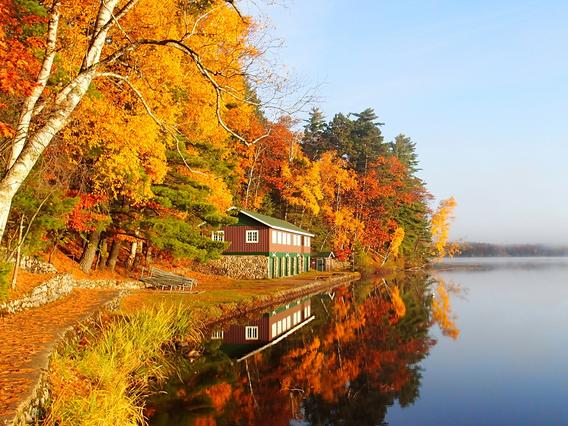
Forests provide wildlife habitat and facilitate carbon sequestration.
Challenge: Non-native insects & diseases; changes in frequency & severity of climate extremes and natural disturbances; widespread tree decline and mortality; and an assessment of adaptation strategy effectiveness at sustaining & restoring forests against threats is needed.
Principal Investigator(s):
- Anthony D'Amato (University of Vermont)
Co-Investigator(s):
- Brian Palik (U.S. Forest Service)
- Lucas Harris (University of Vermont)
- Rebecca Montgomery (University of Minnesota)
- Lucia Fitts Vargas (University of Minnesota)
Cooperator/Partner(s):
- Maria Janowiak (Northern Institute of Applied Climate Science)
- Christopher Swanston (Northern Institute of Applied Climate Science)
- Greg Edge (Wisconsin Department of Natural Resources)
- Michael Reinikainen (Minnesota Department of Natural Resources)
Forests across the U.S. are experiencing unprecedented tree mortality caused by a variety of stressors, including invasive insects, disease, extreme weather, wildfires, and droughts. For example, the emerald ash borer, a nonnative insect, has killed tens of millions of trees in the Lake States region of Minnesota, Wisconsin, and Michigan alone in the past decade. Tree die offs alter the structure of forests, making them less-suitable habitat for many species, and decrease their ability to perform important ecosystem functions, such as carbon sequestration. Climate change further threatens already damaged forests, as shifting temperature and precipitation conditions alter species’ range limits. To prevent additional tree loss in the Lake States region, managers need new tools and approaches for restoring and enhancing tree cover.
Tree planting has been used for over a century as part of reforestation activities in the Lake States region. Yet modern reforestation programs face unprecedented challenges, including the need to plant in challenging ecosystems (e.g., floodplains and swamp forests) and to adapt planting projects to changing climate conditions. In this project, researchers are examining if tree planting can be used to restore and maintain damaged forests across the region in the face of climate, disturbance, and invasive species impacts. Researchers will document the survival and growth of tree species planted across forests impacted by invasive species and other disturbances to determine which planting approaches are most effective at restoring and maintaining forests in Minnesota, Wisconsin, and Michigan. They will then use these results to identify areas in the region that are likely to be most benefited by reforestation projects in the future.
This work will be in partnership with the Minnesota Department of Natural Resources (DNR), Wisconsin DNR, Michigan DNR, and Northern Institute of Applied Climate Science. Outcomes of this project will help natural resource managers in the Lake States region identify best practices in adaptive planting and to prioritize areas for reforestation projects.
Read more from the CASC Project Explorer.
